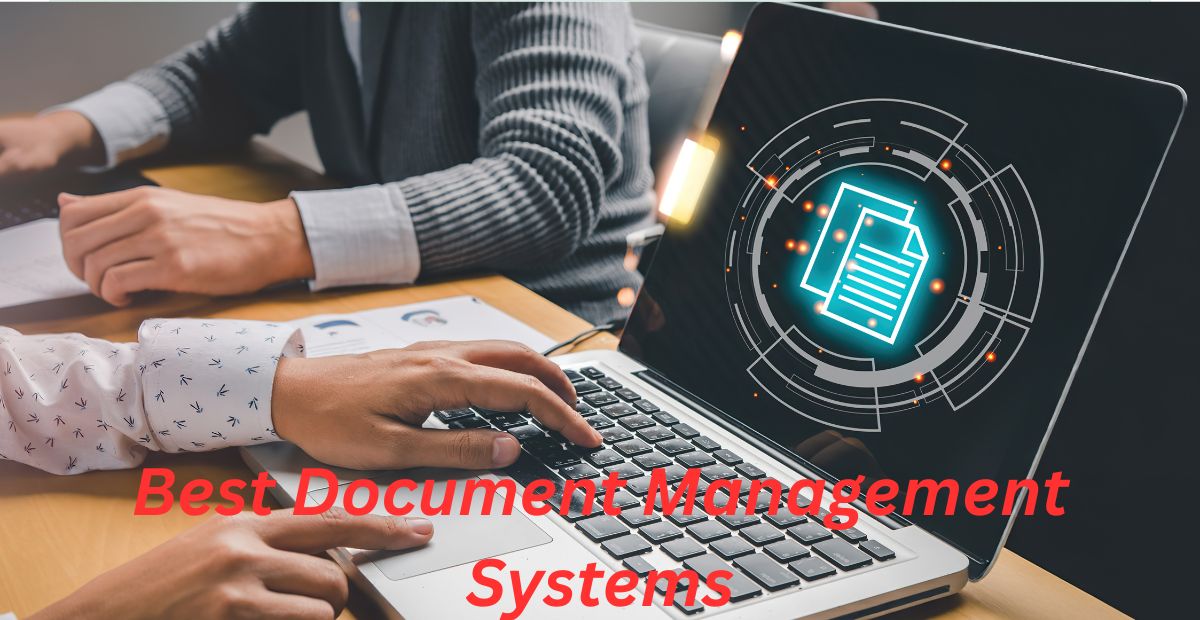Virtual meetings have become a cornerstone of modern business communication. With remote work on the rise, organizations must master the art of conducting efficient and engaging online meetings. Poorly managed virtual meetings can lead to wasted time, disengaged participants, and decreased productivity.
In this blog, we’ll explore the best tools, strategies, and best practices to run highly effective virtual meetings that keep participants engaged and drive results.
Why Virtual Meetings Matter
Virtual meetings allow teams to collaborate seamlessly, regardless of location. They save time, reduce travel costs, and enable real-time decision-making. According to a Gartner report, 74% of companies plan to shift employees to remote work permanently, making virtual meetings a necessity.
Key Benefits of Virtual Meetings:
- Cost-Effective – No travel or venue expenses.
- Flexible & Scalable – Connect with global teams effortlessly.
- Increased Productivity – Faster decision-making with instant communication.
- Better Work-Life Balance – Reduces commute stress for employees.
However, without proper structure, virtual meetings can become unproductive. Let’s examine typical problems and how to solve them.Let’s examine typical problems and how to solve them.
Common Challenges of Virtual Meetings
Running a successful virtual meeting isn’t just about clicking a “Join” button. These are the primary issues and their fixes:
1. Technical Issues
Virtual meetings have become essential for remote work, online learning, and business communication. However, technical problems can disrupt productivity and cause frustration. Here are the most common technical issues in virtual meetings and how to resolve them.
- Poor internet connection, audio/video lag, and software glitches disrupt meetings.
- Solution: Test equipment beforehand and use reliable tools.
2. Lack of Engagement
Virtual meetings are essential for remote teams, but keeping participants engaged can be challenging. Low engagement leads to unproductive discussions, missed collaboration opportunities, and disconnection among team members. Below are common causes of low engagement and actionable solutions.
- Participants multitask, leading to low interaction.
- Solution: Use interactive elements like polls, Q&A, and breakout rooms.
3. Time Management Problems
Virtual meetings often suffer from poor time management, leading to wasted hours, unproductive discussions, and frustrated participants. Common issues include meetings running too long, late starts, or disorganized agendas. Below are key time management challenges and effective solutions.
- Meetings often run longer than scheduled.
- Solution: Set a clear agenda and stick to time limits.
4. Difficulty in Collaboration
Virtual collaboration is essential for remote teams, but technical barriers, communication gaps, and lack of engagement can hinder effective teamwork. Below are common collaboration challenges in virtual meetings and practical solutions to enhance productivity.
- Remote teams struggle with brainstorming and real-time document sharing.
- Solution: Use collaborative tools like Miro or Google Docs.
5. Fatigue from Too Many Meetings
With the rise of remote work, many professionals suffer from virtual meeting fatigue exhaustion caused by excessive back-to-back video calls. This fatigue reduces productivity, increases stress, and lowers engagement. Below are the causes and practical solutions to minimize meeting burnout.
- “Zoom fatigue” is real—too many meetings drain productivity.
- Solution: Only schedule necessary meetings and keep them concise.
Now, let’s explore the best tools to enhance virtual meetings.
Essential Tools for Virtual Meetings
Choosing the right tools can make or break your virtual meeting experience. Here’s a breakdown of the best software for different needs:
1. Video Conferencing Tools
With remote work and hybrid teams becoming the norm, choosing the right video conferencing tool is crucial for seamless communication. The best platforms offer high-quality video, collaboration features, and security while reducing technical issues. Below is a list of top video conferencing tools and their key benefits.
- Zoom – Best for large meetings with breakout rooms.
- Microsoft Teams – Ideal for Office 365 users with deep integrations.
- Google Meet – Simple and secure for G Suite users.
- Webex – Great for enterprise-grade security.
2. Collaboration & Whiteboarding Tools
Effective teamwork in remote settings requires interactive tools that enable brainstorming, real time collaboration, and visual project planning. Below are the top collaboration and whiteboarding tools that help teams work together seamlessly, whether for meetings, ideation, or project management.
- Miro – Interactive whiteboard for brainstorming.
- Google Jamboard – Simple digital sticky notes and drawings.
- Mural – Visual collaboration for remote teams.
3. Project Management & Follow-Up Tools
Keeping track of tasks, deadlines, and meeting action items is crucial for remote and hybrid teams. The right project management and follow up tools help streamline workflows, improve accountability, and ensure nothing falls through the cracks. Below are the top tools to enhance productivity and post-meeting execution.
- Asana/Trello – Track action items post-meeting.
- Slack – Quick follow-ups via chat.
- Notion – Centralized meeting notes and documentation.
4. Engagement & Polling Tools
Keeping participants engaged in virtual meetings is a common challenge. Live polling, Q&A, and interactive tools help boost participation, gather real time feedback, and make meetings more dynamic. Below are the top engagement tools to make your virtual sessions more interactive and productive.
- Slido – Live Q&A and polls.
- Mentimeter – Interactive presentations and feedback.
- Kahoot! – Gamified quizzes for engagement.
5. Recording & Transcription Tools
Recording and transcribing virtual meetings helps teams retain important discussions, improve accessibility, and ensure accountability. The right tools provide high-quality recordings, automated transcriptions, and easy sharing options. Below are the top tools for capturing and reviewing meeting content.
- Otter.ai – AI-powered meeting transcriptions.
- Fireflies.ai – Automated meeting notes and summaries.
- Loom – Record and share video recaps.
Using the right combination of these tools ensures smooth, engaging, and productive virtual meetings.
Best Practices for Running Effective Virtual Meetings
Now that you have the right tools, follow these best practices to maximize meeting efficiency.
1. Set a Clear Agenda
- Define objectives and share the agenda in advance.
Example:
- Objective: Finalize Q3 marketing strategy.
- Agenda Items:
- Review Q2 performance (10 min)
- Discuss new campaign ideas (15 min)
- Assign tasks (5 min)
2. Limit Attendees
- Only invite essential participants to keep discussions focused.
3. Start on Time & End Early
- Respect participants’ time—avoid unnecessary delays.
4. Use Video (When Possible)
- Video increases engagement and accountability.
5. Assign Roles
- Moderator – Keeps discussion on track.
- Timekeeper – Ensures agenda adherence.
- Note-taker – Documents key decisions.
6. Encourage Participation
- Ask open-ended questions and use polls to involve everyone.
7. Record the Meeting
- Helps absent team members catch up later.
8. Summarize Action Items
- End with clear next steps and deadlines.
By following these best practices, you’ll ensure your virtual meetings are structured and productive.
How to Engage Participants in Virtual Meetings
Engagement is critical—here’s how to keep your team actively involved:
1. Icebreakers & Check-Ins
- Begin with an entertaining query: “What is your favorite productivity tip?”
2. Use Breakout Rooms
- Small group discussions boost interaction.
3. Gamify the Experience
- Quizzes, leaderboards, and rewards make meetings fun.
4. Interactive Polls & Q&A
- Tools like Slido keep the conversation flowing.
5. Visual Aids & Screen Sharing
- Use slides, videos, or live demos to maintain interest.
6. Rotate Facilitators
- Different speakers prevent monotony.
Engaged participants lead to better collaboration and outcomes.
Follow-Up Strategies for Virtual Meetings
A meeting’s success depends on what happens afterward.
1. Send Meeting Notes Promptly
- Include decisions, action items, and deadlines.
2. Assign Clear Responsibilities
- Use project management tools (Asana, Trello) to track tasks.
3. Gather Feedback
- Ask participants for improvement suggestions.
4. Schedule Follow-Ups
- Ensure accountability with check-in meetings.
Conclusion
Running effective virtual meetings requires the right tools, structure, and engagement strategies. By setting clear agendas, using interactive platforms, and following up efficiently, you can transform virtual meetings into powerful productivity drivers.
FAQs: How to Run Effective Virtual Meetings
What is the ideal duration for a virtual meeting?
How do you prevent distractions in virtual meetings?
- Encourage video on – Increases accountability.
- Mute non-speakers – Reduces background noise.
- Use interactive tools (polls, Q&A) – Keeps participants engaged.
- Set clear expectations – Ask attendees to close unrelated tabs.
What’s the best way to take meeting notes?
- AI note-taking tools (Otter.ai, Fireflies.ai) – Automatically transcribe discussions.
- Shared Google Docs/Notion – Real-time collaboration.
- Assign a note-taker – Ensures key points are captured.
How often should teams have virtual meetings?
- Daily standups (10-15 min) – For agile teams.
- Weekly syncs (30-45 min) – For project updates.
- Ad-hoc meetings – Only when necessary.
- Avoid “meeting overload” by asking: “Could this be an email or Slack message?”
How do you engage quiet participants?
- Direct questions – “Alex, what are your thoughts?”
- Polls & anonymous feedback (Slido, Mentimeter).
- Breakout rooms – Smaller groups encourage participation.
- Pre-meeting input – Ask for ideas via chat beforehand.
What if someone has technical issues?
- Test tech beforehand – Audio, video, and screen sharing.
- Provide a dial-in option – For backup connectivity.
- Share troubleshooting tips (e.g., restarting Zoom).
- Record the meeting – For those who couldn’t join.
How do you handle time zone differences?
- Rotate meeting times – Fair for global teams.
- Use scheduling tools (World Time Buddy, Calendly).
- Record sessions – For teammates who can’t attend live.
What’s the best way to follow up after a meeting?
- class=”rank-math-question”
- Send notes within 24 hours – Include decisions & action items.
- Use project management tools (Asana, Trello) – Assign tasks.
- Schedule follow-ups – Ensure accountability.
How can you make virtual meetings more fun?
- Start with icebreakers – “Share your favorite work-from-home snack!”
- Use virtual backgrounds/themes – Casual Fridays, holiday themes.
- Gamify with quizzes (Kahoot!, Trivia).
- Recognize contributions – Shout-outs for great ideas.
Are virtual meetings less effective than in-person ones?
- No travel time.
- Easier to record and revisit.
- More inclusive for remote teams.
Mastering virtual meetings transforms how teams communicate and collaborate turning disconnected conversations into focused, results-driven sessions. By implementing structured agendas, engagement tools, and clear follow-ups, you can convert meeting time into tangible productivity. For more insights on optimizing remote collaboration, follow Infinity Logic.





